As the Product Head for a SaaS platform and a two-time founder, I’ve navigated the choppy waters of building and scaling digital products. I’ve learned that a successful SaaS product is much like a well-orchestrated symphony, with each instrument playing its vital part. Let me take you on a journey through the suite of services and tools that have been instrumental in my ventures.
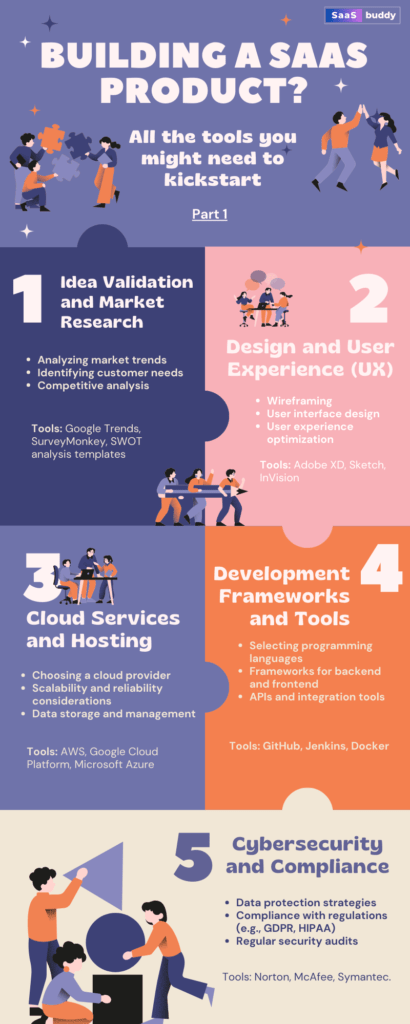
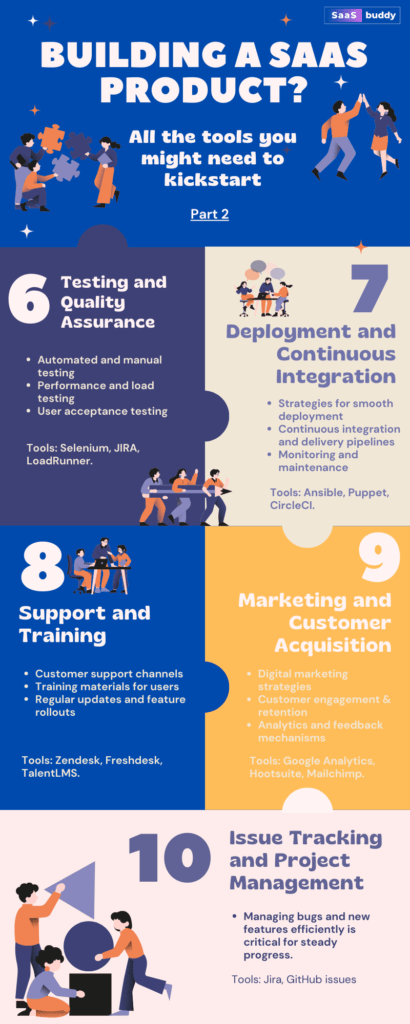
Introduction and Mind Mapping
Every great product begins with a blueprint. For me, that’s a mind map – a visual brainstorming tool that helps organize your thoughts and ideas into a coherent plan. I often use Miro for this. It’s like a digital canvas, allowing me to chart out the various components needed for a SaaS product, from emails and hosting to databases and authentication.
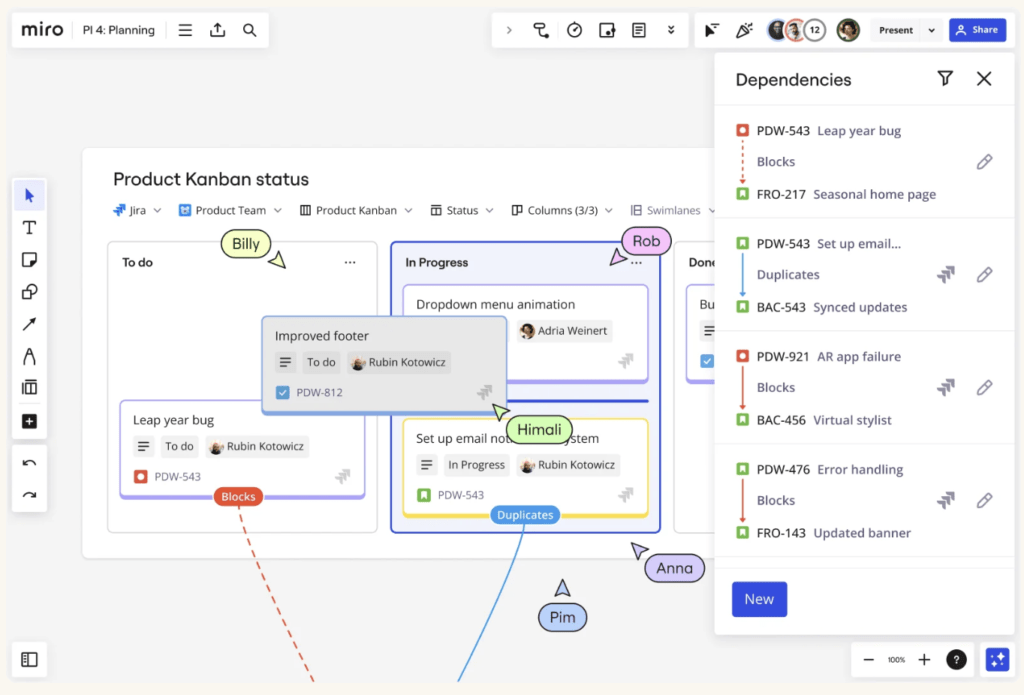
Hosting and Deployment
Your SaaS application needs a home, a reliable hosting service where it can reside and be accessible to users. Throughout my career, I’ve utilized various platforms. AWS is robust for scalable solutions, while Vercel and Netlify are fantastic for quick deployments. My go-to has been SST for its seamless AWS integrations.
Authentication
Securing user data and ensuring only authorized access to your application is paramount. I’ve experimented with several services, but Auth0 and AWS Cognito have stood out for their robustness and ease of integration.
Logging and Analytics
Understanding how your application performs and quickly identifying issues are crucial for any SaaS platform. AWS Cloudwatch has been a reliable tool for monitoring and analyzing my applications’ health and performance.
Databases
Data is the lifeblood of any application. Whether it’s user profiles or transaction records, you need a reliable place to store this information. My projects have seen a variety of databases, from PostgreSQL for its powerful features and reliability to DynamoDB for its seamless scaling and integration with AWS services.
Fun Fact: Disney+, a major player in the global online video streaming scene, leverages Amazon DynamoDB to expand its reach worldwide. With a vast digital library delivered straight to over 60.5 million subscribers’ homes, Disney+ relies on DynamoDB to support its extensive global presence. The platform’s Content Discovery team utilizes DynamoDB’s global tables to efficiently scale and provide beloved features like Continue Watching, Watchlist, and Personalized Recommendations to its audience.
Emails and Notifications
Communicating with users is a critical aspect of customer engagement and retention. For sending out emails and notifications, I’ve relied on AWS SES and SendGrid. These services ensure that my messages reach the users, whether it’s a welcome email or critical service updates.
SMS Notifications
In some cases, especially for alerts or two-factor authentication, SMS might be a more direct way to communicate with users. Here, AWS SNS and Twilio have been invaluable, offering reliable and scalable solutions for sending text messages globally.
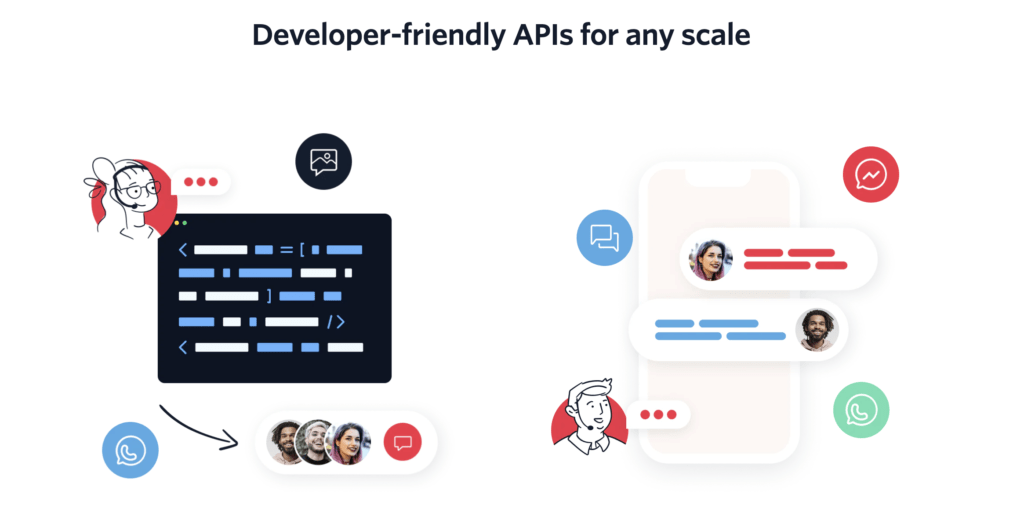
Websocket Events
Real-time interaction can significantly enhance user experience. For this, websockets are essential. I’ve implemented real-time features using AWS WebSocket API and Pusher to ensure that users get immediate updates, enhancing engagement and satisfaction.
File Storage
Whether it’s user uploads or static assets, your application will need a place to store files. AWS S3 or Azure Blob Storage have been my go-to solution for their scalability, reliability, and integration with other Infrastructure services.
Though you’ll have to keep in mind what stage are you in your journey. Startups quickly adopt cloud solutions for all storage, skipping traditional onsite options like NAS. They operate minimally, often just needing WiFi and a shared workspace. As they expand, they utilize cloud-based NAS for development efficiency and high availability. They build with microservices, choosing the best storage solution for each, often using NoSQL databases and cloud services like Amazon S3 or Azure Blob for images. For security, they store backups on Amazon S3 and archive in cold storage solutions. Throughout development, they use Amazon EBS or Azure Virtual Disk, transitioning to robust cloud databases for live environments.
Enterprises often require a hybrid approach, blending traditional NAS and block storage with modern cloud storage. Advanced hybrid solutions provide a unified interface to manage both legacy systems and cloud data on AWS and Azure. In such setups, NetApp’s Cloud Volumes ONTAP offers versatile storage management across various locations and supports NAS in NFS and CIFS formats for hybrid and multi-cloud environments.
Payment Processing
If your SaaS is a paid service, then seamlessly handling transactions is a must. Stripe has been a game-changer for its ease of integration, security, and extensive documentation, making it easier to implement a robust payment system.
Documentation and Diagrams
A well-documented service is as important as the service itself. Tools like Miro and Eraser have been crucial for creating internal and external documentation, ensuring that my team and users understand the intricacies of the product.
Version Control and CI/CD
In the realm of SaaS development, maintaining code integrity and streamlining workflows is paramount, and that’s where Git has become an indispensable tool for version control. It allows teams to collaboratively modify and track changes in the codebase, ensuring that any slip-ups can be reverted and reviewed efficiently. This is not just about keeping the code safe; it’s about making collaborative development a less error-prone and more synchronized process.
Complementing version control, Continuous Integration and Continuous Deployment (CI/CD) pipelines like GitHub Actions and CircleCI revolutionize how we deploy these changes. They automate the testing and deployment process, ensuring that new code is integrated, tested, and ready for production swiftly and reliably. This automation is a game-changer, reducing manual errors, facilitating rapid deliveries, and enhancing the quality of software delivery. Together, Git and CI/CD tools embody the agile, efficient approach to software development that modern enterprises strive for.
Also read: Do Startups Need DevOps Early On for their SaaS product?
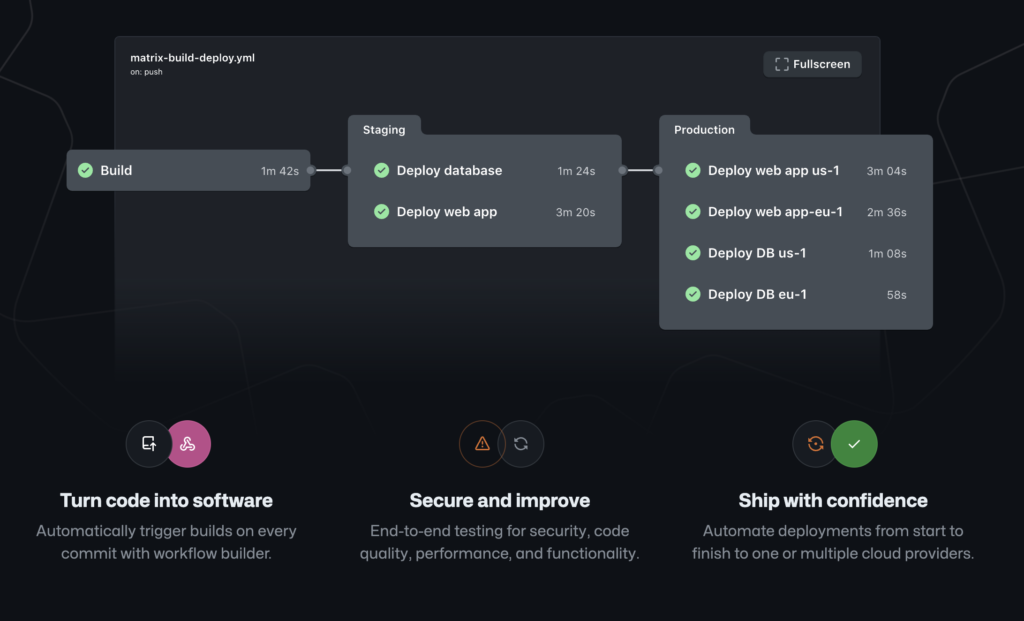
Issue Tracking and Project Management
Managing bugs and new features efficiently is critical for steady progress. I’ve utilized Jira and GitHub Issues to keep track of what needs to be done and monitor the progress of my team.
Communication and Collaboration
Effective communication can make or break a remote team. Tools like Slack, Discord, and Zoom have been instrumental in keeping my teams aligned and productive, regardless of their physical location.
Search and Semantic Search
As your data grows, so does the need for effective search capabilities. I’ve turned to solutions like Elasticsearch and Pinecone to implement fast and relevant search functionalities within my applications.
Feedback and Support
Engaging with users and addressing their issues promptly is key to retaining them. For feedback and support, I’ve implemented systems using services like Zendesk to ensure users’ concerns are heard and resolved efficiently.
Other Alternatives:
API Keys
For applications that offer API access, managing API keys securely and conveniently is crucial. Unkey has been a handy tool in this area, simplifying the process of API key management.
Design and Prototyping
Finally, no product can succeed without a good design. Figma has been my choice for designing interfaces that are not only visually appealing but also user-friendly.
Helpful Resource: How to get Figma for Free
In conclusion, building a SaaS product is an intricate process involving multiple services and tools. Each plays a critical role in ensuring that your product is robust, scalable, and delivers a seamless user experience. While this list is comprehensive, the landscape is always evolving, and so should your toolbox. Happy building!

